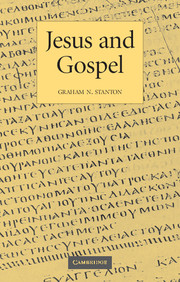Book contents
- Frontmatter
- Contents
- Preface
- List of abbreviations
- 1 Introduction
- PART I JESUS AND GOSPEL
- 2 Jesus and Gospel
- 3 The fourfold Gospel
- 4 Jesus traditions and gospels in Justin Martyr and Irenaeus
- 5 The law of Christ and the Gospel
- PART II JESUS
- PART III THE GOSPELS AND PAPYRI CODICES
- Bibliography
- Index of passages cited
- General index
4 - Jesus traditions and gospels in Justin Martyr and Irenaeus
Published online by Cambridge University Press: 21 December 2009
- Frontmatter
- Contents
- Preface
- List of abbreviations
- 1 Introduction
- PART I JESUS AND GOSPEL
- 2 Jesus and Gospel
- 3 The fourfold Gospel
- 4 Jesus traditions and gospels in Justin Martyr and Irenaeus
- 5 The law of Christ and the Gospel
- PART II JESUS
- PART III THE GOSPELS AND PAPYRI CODICES
- Bibliography
- Index of passages cited
- General index
Summary
The status of Jesus traditions and of the ‘canonical’ gospels gradually grew in the course of the second century. At the beginning of the century there was widespread respect for ‘words of the Lord’ and for ‘the Gospel’ (whether oral or written) in which Jesus traditions were embedded. By the end of the century the early church seemed to be within a whisker of accepting a ‘canon’ of four written gospels, no more, no less.
I do not intend to discuss all the developments and factors which led to the sea change which took place during the second century. In order to do so I would need to offer many hostages to fortune, for at crucial points the evidence is disputed, particularly with reference to the first half of the second century. For example, although the Didache has usually been dated to the first decades of the second century, it is now generally accepted that it contains several layers of traditions, the dating of which is problematic. A major challenge has been mounted to the consensus that Ignatius wrote seven letters in the early years of the second century. I do not think that the challenge is likely to be successful, but discussion of it would be a distraction from my primary task. And do we know the date of II Clement?
I shall focus my attention on two second-century giants whose substantial surviving writings can be dated with some confidence, Justin Martyr and Irenaeus.
- Type
- Chapter
- Information
- Jesus and Gospel , pp. 92 - 109Publisher: Cambridge University PressPrint publication year: 2004



